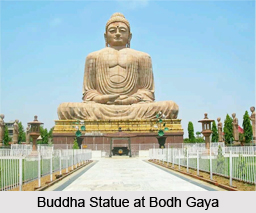 Bodh Gaya is a quiet village which is situated near the Niranjana River in the state of Bihar. Bodh Gaya is the birthplace of Buddhism. It is one of the most important and sacred Buddhist pilgrimage center in the world. This is the place where Lord Buddha gained Enlightenment over 2,500 years ago and founded the religion based on compassion, reason and universal truths, shorn of ritual and superstition.
Bodh Gaya is a quiet village which is situated near the Niranjana River in the state of Bihar. Bodh Gaya is the birthplace of Buddhism. It is one of the most important and sacred Buddhist pilgrimage center in the world. This is the place where Lord Buddha gained Enlightenment over 2,500 years ago and founded the religion based on compassion, reason and universal truths, shorn of ritual and superstition.
Places to Visit at Bodh Gaya
There is a magnificent Mahabodhi Temple and the Bodhi Tree from the original sapling still stands in the temple premises. Apart from this there are also many other places to visit in Bodh Gaya, namely;
•Mahabodhi Temple: The temple stands in the east to the Bodhi Tree. The temple is an architectural amalgamation of many centuries, cultures and heritages.
•Animesh Lochan Chaitya: It is believed that the Buddha spent one week here looking towards the great Bodhi tree out of gratitude, without twinkling his eyes.
•Bodhi Tree: The Bodhi tree under which he meditated is still grown here from its saplings. The present Bodhi Tree is probably the 5th succession of the original tree under which the Buddha had attained enlightenment. Vajrasana, the seat of stability, is a stone platform on which the Buddha is supposed to have sat in meditation gazing east, under the Bodhi tree.
•Thai Monastery: The Thai Temple has a typical sloping and curved roof covered with golden tiles. Inside, the temple holds a massive and spectacular bronze statue of Buddha. Next to the Thai temple there is a recent 25 meter statue of Buddha located within a garden which has existed there for over 100 years.
•Pretshila Hill: This hill adds to the beauty of Gaya. It is about 10 kms from the Ramshila hill. Just below the hill is the "Brahma Kund". After taking bath in this pond people go for the "Pind Daan" which involves performance of religious rites and offering donations and charity for the peace of souls of one"s parents and ancestors.
•Ahilya Bai Temple: On top of the hill the Queen of Indore, Ahilya Bai, built a temple in 1787popularly known as "Ahilya Bai Temple". This temple has always been an attraction for the tourists due to its unique architecture and magnificent sculptures.
•Vishnupad Temple: In 1787 Queen Ahilya Bai built the Vishnu temple on the banks of River Phalgu. The temple has some great architecture and design which attracts devotees and tourists alike. A 30-meter high octagonal tower overshadows this temple.

•Barabar Caves: It is an important archaeological site. The caves carved out from solid rocks bear details of the life of the Buddha. These caves of Mauryan period are rightly considered to be the origin of Indian cave architecture. It was here in these caves where the Buddha had meditated for some time and concluded that the ultimate knowledge can not be attained through mortification of the flesh.
•Chankramana: This marks the sacred spot of the Buddha"s meditative perambulations during the 3rd week after pious enlightenment. It is believed that wherever the Buddha put his feet lotus sprang up.
•Ratnagarh: The Buddha spent one week here, where it is believed that 5 colours came out of his body.
•Other Treasures of Bodhgaya: Lotus Tank, Buddha Kund, Rajayatana, Brahma Yoni, Chinese Temple and Monastery, Burmese Temple, Buddhist Monastery of Bhutan, International Buddhist House and Japanese Temple, Tibetan Monastery, Archaeological Museum.
How to Reach Bodh Gaya
Bodh Gaya is well connected by road to Gaya, Nalanda, Rajgir, Patna, Varanasi and Kolkata. The nearest airport is at Gaya and the nearest railway station is Gaya.



















